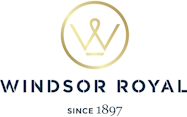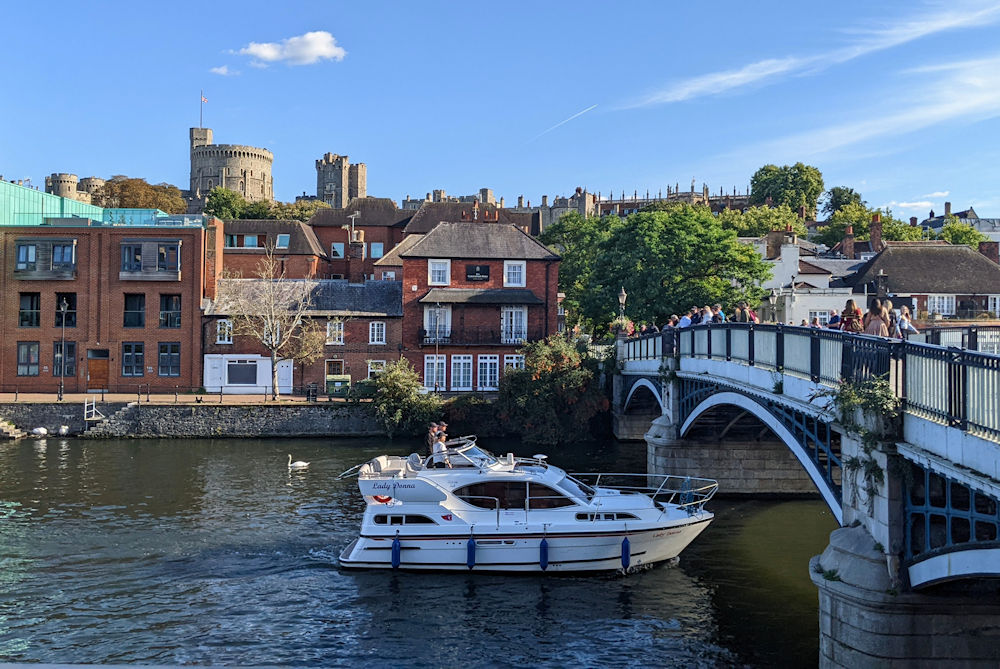
View of Windsor Bridge and Windsor Castle from Côte Brasserie Eton, image Windsor & Eton PhotoArt
Many visitors to Windsor don’t appreciate that the historic town of Eton – with its pretty high street and famous college – is situated just a stone’s throw from Windsor across the River Thames via Windsor Bridge. Cross the bridge by foot or by biycle and you’ll be traversing a structure that has connected communities in Windsor and Eton for nearly a thousand years. And the bridge, in its current design, is 200 years old on 1 June 2024.
Windsor Bridge has also allowed people, trade, and ideas to flow into the area from further afield and acted as a travel route for successive royal courts. In doing so, it has been a backdrop to pivotal points in Britan’s history.
The current Windsor Bridge was built by the determination and hard labour of local people and for 200 years it's allowed generations to cross the river smoothly as they go about their everyday lives.
Today Windsor Bridge is the perfect place to stop and appreciate the gentle pace of life on the River Thames. Book a riverside table at Côte Brasserie on the Eton side or Sir Christopher Wren Hotel on the Windsor side and watch the world go by. Hire a boat from John Logie (Windsor) or Kris Cruisers (Datchet) and float beneath the bridge's arches for a unique perspective. Thinking of getting engaged? Against the backdrop of the Castle, Windsor Bridge is a perfect spot for a wedding proposal! Or just stop for a moment and take a selfie or two – it's a special place.
See the end of the page for more ideas and inspiration. Our thanks to the staff of Windsor & Royal Borough Museum for providing the following fascinating history of Windsor Bridge.
Connections and trade
The earliest reference to a bridge in Windsor was in 1236 when permission was given to use five oak trees from Windsor Forest for the purpose of repairing the existing bridge. Although no records survive to tell us the exact date it was first built, we can assume that the bridge must have already been a significant part of the town’s infrastructure, especially as it was now needing repairs.
The bridge acted as a vital connection to London for both Windsor Castle and the town. It offered a new access route for the royal court and improved trade between neighbouring communities. To secure its maintenance, the town had the right to collect tolls from those travelling over it and those sailing under it. In medieval England, a toll collected for the purpose of repairing a bridge was called pontage.
The bridge continued to be at the centre of trade into the Tudor period. By 1589, approximately 2000 small boats were habitually using this stretch of the Thames. The wharfside, where goods were loaded and unloaded, was located next to the bridge. Combined, both the wharf and the bridge acted as the main point of entry to Windsor, and for this reason, it was important that they were maintained for longevity. In 1551, the Borough treasurer sold two silver chalices in order to raise £15 for its repair.
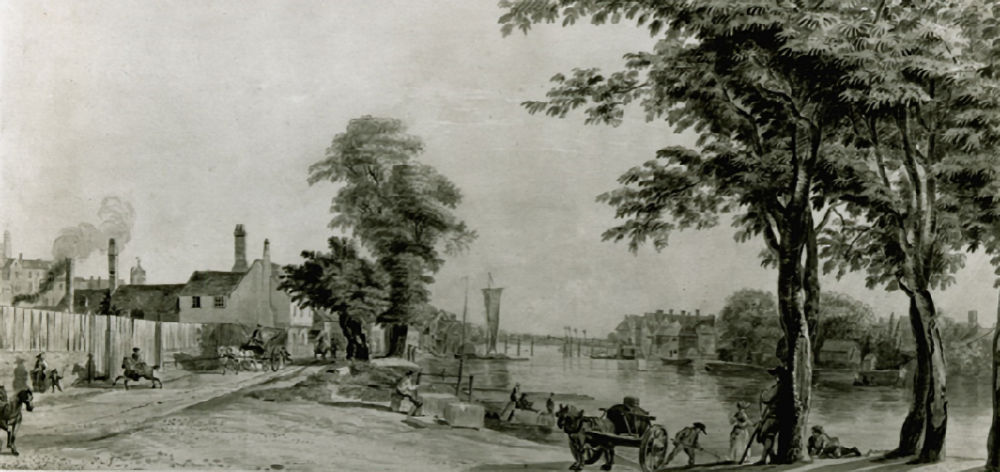 WNDRB: 601.64.4 – Copy of a painting of Windsor Bridge by Paul Sandby, 1784. The view of the bridge is from Datchet Road.
WNDRB: 601.64.4 – Copy of a painting of Windsor Bridge by Paul Sandby, 1784. The view of the bridge is from Datchet Road.
In 1649, the bridge was almost entirely rebuilt and was later repaired again in 1676 using 25 loads of timber. Continuous use for nearly a century, meant that by 1733, it was found to be in a dangerous condition during inspection. This led to an act being passed on 5th May 1736 that made the mayor, bailiffs and burgesses of the Borough of New Windsor, lawfully responsible for the maintenance of the bridge. They were allowed to keep implementing the bridge toll but had to ensure the money was used to repair or rebuild as necessary. By 1771, the bridge was in such a poor condition that it was felt carts or coaches were in danger of falling through it. Immediate repairs were ordered.
A bridge of stone
The foundation stone of the current Windsor Bridge was laid in July 1822 by Prince Frederick, Duke of York and Albany (brother of George IV). The bridge was designed by Charles Hollis, who had also designed the new Windsor Parish Church only a few years earlier. Cast iron was chosen as the material for the bridge’s three span arches. This was a natural choice for the Windsor Corporation, considering Hollis had used cast iron for the pillars and the roof supports of the new Church. Two granite pillars were also used to support the bridge in mid-stream.
The construction of the bridge was not without problems. Its building was originally contracted to William Moore, but he passed away during the project, and control was given to his son, Richard Moore. There were also a series of further misfortunes. During construction, a barge sank after hitting the bridge works; cast iron ribs that arrived from Wales were defective and broke as they were unloaded; and a worker was sadly crushed to death.
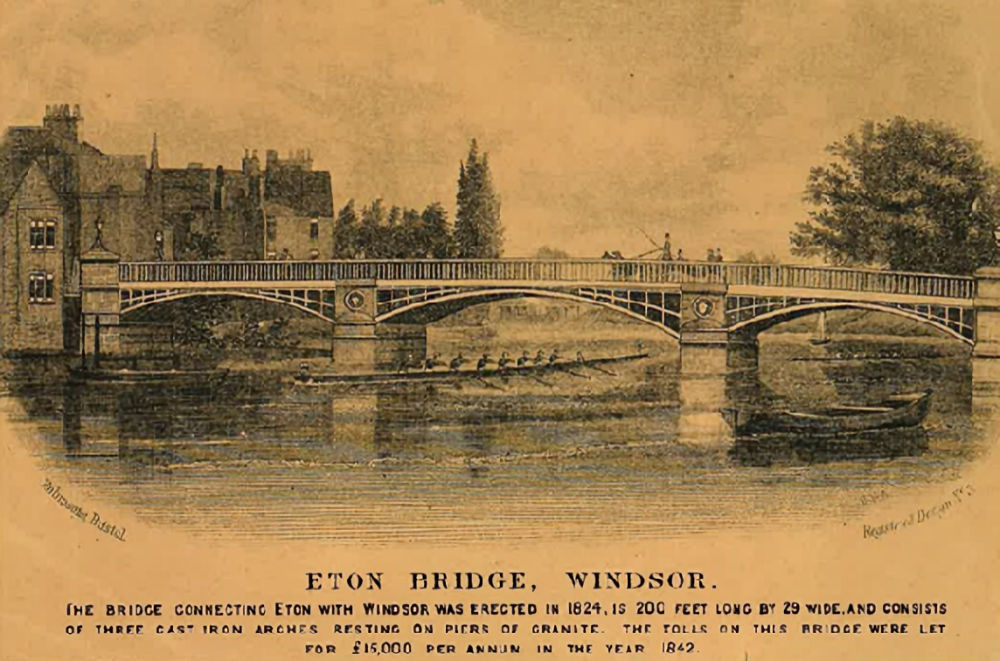 WNDRB:1977.250.2 – Engraving of Windsor Bridge, circa 1842.
WNDRB:1977.250.2 – Engraving of Windsor Bridge, circa 1842.
Ultimately, the project was a success, and the new bridge was opened to the public on 1 June 1824. In total the new bridge had cost £15,000. The official opening ceremony was one of low-profile. At 12pm, those involved with the bridge, including Charles Hollis (architect), Richard Williams (contractor), and the mayor and several burgesses, proceeded to the bridge from the Swan Inn on Thames Street, Windsor. Hollis presented a silver key for the toll gate to the mayor. Everyone then walked to the centre of the bridge and the Town Clerk proclaimed:
"The Mayor of this Borough, in the name of himself and the rest of the Members of the Corporation, as trustees of this bridge, which is now completed agreeably to an Act of Parliament, hereby give notice, that this bridge is now opened for the public use, and that the several tolls will become payable tomorrow, and the exemptions allowed conformably to the said act."
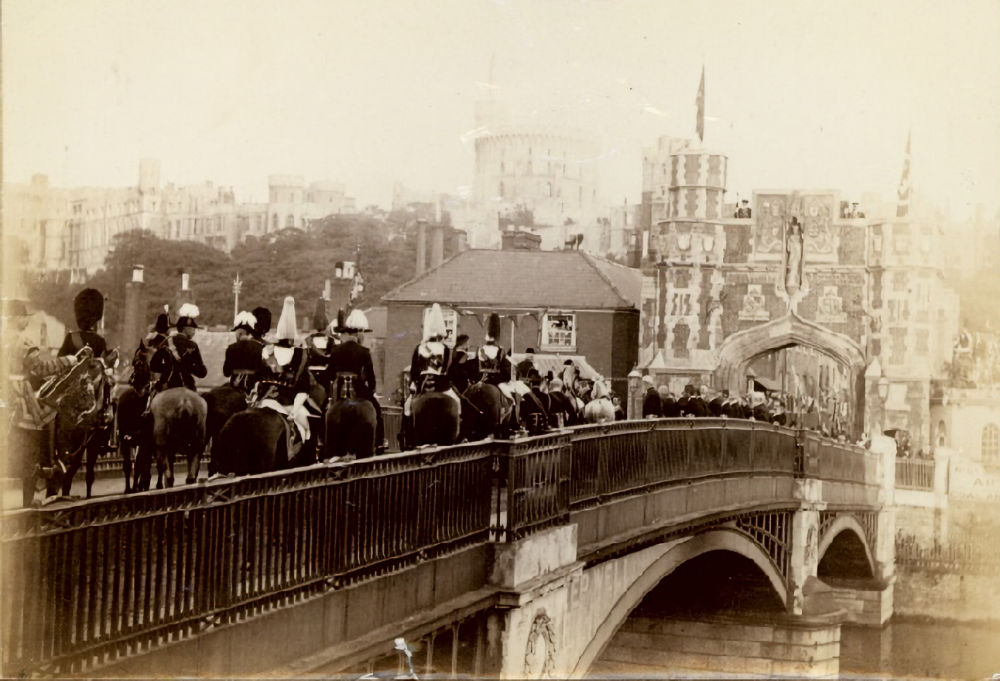
WNDRB: 1977.370 – Photograph of Queen Victoria’s jubilee procession crossing Windsor Bridge, 1897.
Ceremony and Celebrations
Windsor Bridge has been a stage for many important events over the centuries, from royal pageantry and sporting celebrations to darker episodes in our nation’s history. Below are some of the documented events that occurred, but imagine how many other moments of joy, excitement, frustration, and worry also occurred as people travelled across the bridge - now all lost to time.
1520 – Henry VIII and his noblemen travelled from Richmond to Windsor for Garter Day. He arrived from Eton and crossed Windsor Bridge to meet Queen Catherine and the ladies of the Court in a field near to the bridge.
1536 – A priest was hanged from a tree at Windsor Bridge for having protestant views. A butcher called Mark Fytton (or Fitch) was also hung on the same day from gallows in front of the Castle gate. A cross carved near the foot of the Curfew Tower is thought to commemorate Mark Fytton.
1660 – Trumpets were sounded at Windsor Bridge along with the Market House (now Windsor Guildhall) and the Castle Gate to proclaim King Charles II as monarch.
1897 – Queen Victoria and her procession crossed Windsor Bridge when arriving in Windsor for her Diamond Jubilee celebrations. The bridge was decorated, including with a jubilee arch, designed by local artist and architect, A Y Nutt.
1946 – The Olympic flame was carried over the bridge on the way to Wembley. Read more about Windsor's Olympic connections.
Barring of the Bridge
For most of the 19th century, the Windsor Corporation continued to collect tolls from those crossing the bridge. However, local protest to this gathered momentum by the 1870s. Several public protest meetings were held, and in 1874 the Theatre Royal was packed out for such a meeting.
The protests seem to have disappeared in the following years but were reignited when the Windsor Corporation installed new toll gates in 1895. In response, a resident of Eton, Joseph Taylor, published a pamphlet detailing his strong opposition to the tolls. In the pamphlet, he stated that it was unfair to tax inhabits from surrounding communities when the money was only for the benefit of Windsor. He believed that the toll was deterring traders from coming to Windsor and by impairing free trade, was negatively impacting the local economy.
He further explained that the Parliamentary Act that the New Borough of Windsor had been using as the legal foundation for keeping tolls in place had expired in 1872. The Act had originally only allowed for the keeping of tolls so that they could be used to pay off the costs of building the bridge and for any subsequent maintenance. Taylor calculated that the tolls collected per annum equalled £500, meaning the Corporation had collected £12,000 since 1872. He asserted that this sum was disproportionate to any repairs on the bridge, and instead the corporation had collected the money for its own benefit to the detriment of surrounding communities.
Following a three-year fight through the courts, the High Court of Appeal and House of Lords finally ruled in 1898 that the toll should be removed. The tollgates were pulled down and during a celebratory event, the crowds sang:
The task is o’er, the work is done,
The Gate is lost, the Bridge is won!
No Tax or Toll shall the Counties part;
Thus Berks and Bucks unite in heart;
Windsor and Eton from blight are free,
Joined by the English gift of Liberty.
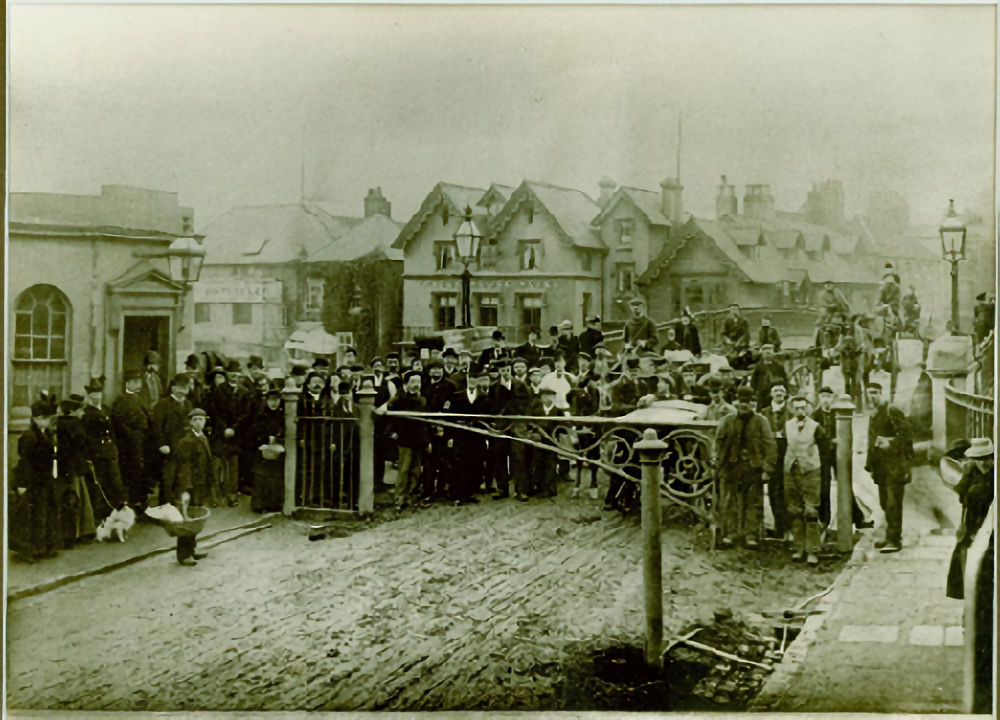 WNDBR: 1977.97 – A crowd gathered to watch the toll gates be removed, 1898.
WNDBR: 1977.97 – A crowd gathered to watch the toll gates be removed, 1898.
Closed to traffic
Nearly 150 years after it was first built, an inspection of the bridge by Berkshire County Council in 1969 discovered cracks in the cast iron arches of the bridge. Initially, traffic was restricted to a single line controlled by traffic lights, but another inspection found further measures were needed. The decision was made to close the bridge to traffic and the last vehicle crossed the bridge on 10 April 1970. Buses were rerouted and diversion signs were put up across Windsor and Eton.
A public inquiry was held at Windsor Guildhall in December 1971 to propose a solution going forward. Windsor and Berkshire's authorities wanted to keep the bridge pedestrianised to prevent traffic congestion in Windsor Town Centre. Eton Urban District Council and Buckinghamshire, however, wanted a vehicular bridge to be rebuilt as they felt trade was being negatively impacted. The Inquiry Inspector, Mr R Auston, recommended there should be a new traffic plan for the area, with the Windsor and Eton Relief Road (now the Queen Elizabeth Bridge/ Royal Windsor Way) becoming the main route for traffic between Windsor and Eton. Windsor Bridge remains pedestrianised and in 2000 further measures were taken to prevent overcrowding on weak spots of the bridge.
In the 21st century, Windsor Bridge is still central to the lives of local people. It remains an iconic landmark and continues to fulfil the same purpose that the original medieval bridge did nearly 1000 years ago - to connect people and places.
The bridge remains in use by pedestrians and cyclists only; it provides an excellent walking route from central Windsor to Eton's High Street, and a good viewing spot for both the river and Windsor Castle.
Find out more about the history of Windsor Bridge. Visit Windsor & Royal Brough Museum in Windsor Guildhall where there are objects on display related to the bridge’s history, including a diorama made in the 1950s.
Related
Comments
Comments are disabled for this post.





 to add an item to your Itinerary basket.
to add an item to your Itinerary basket.









